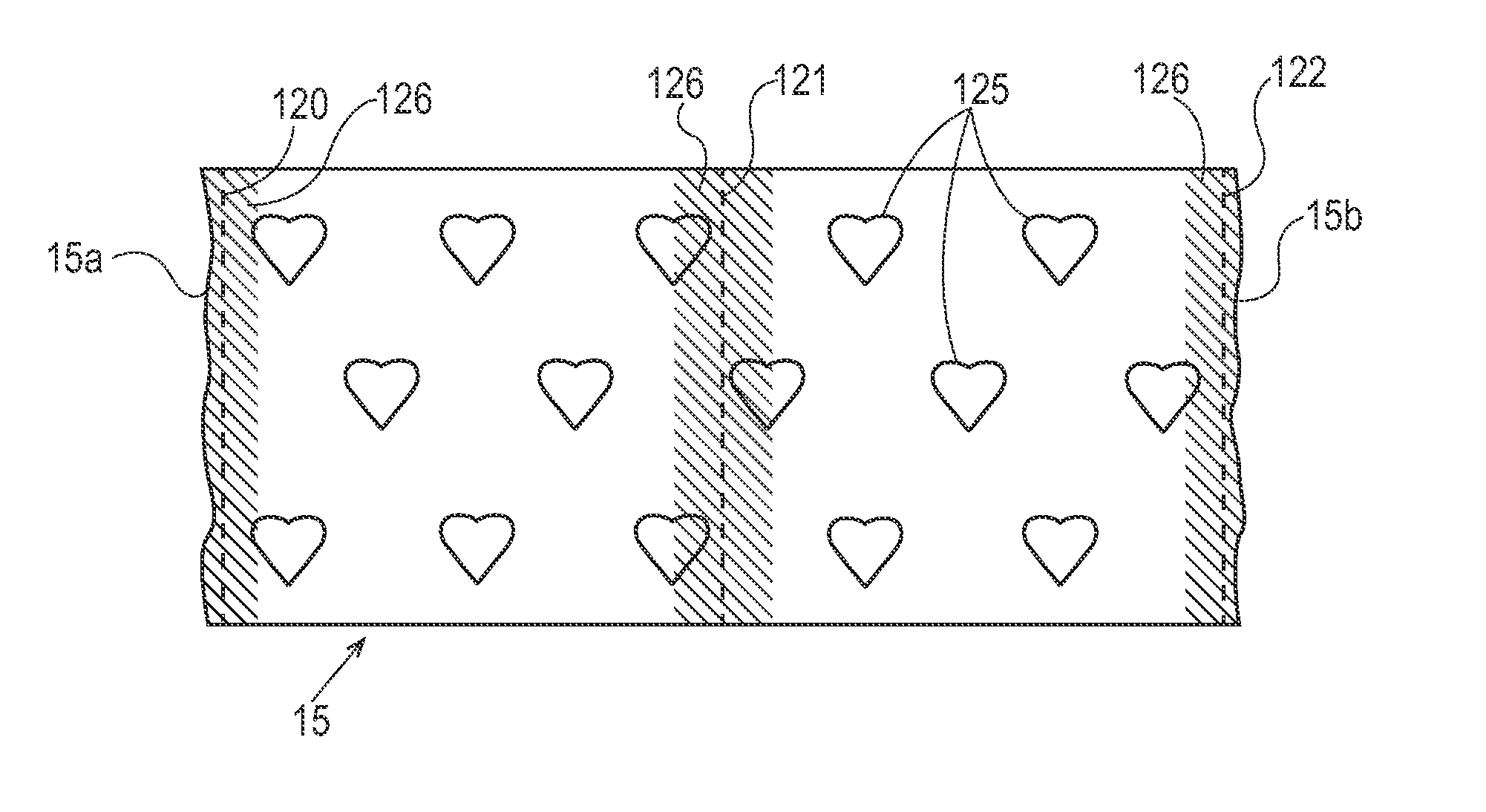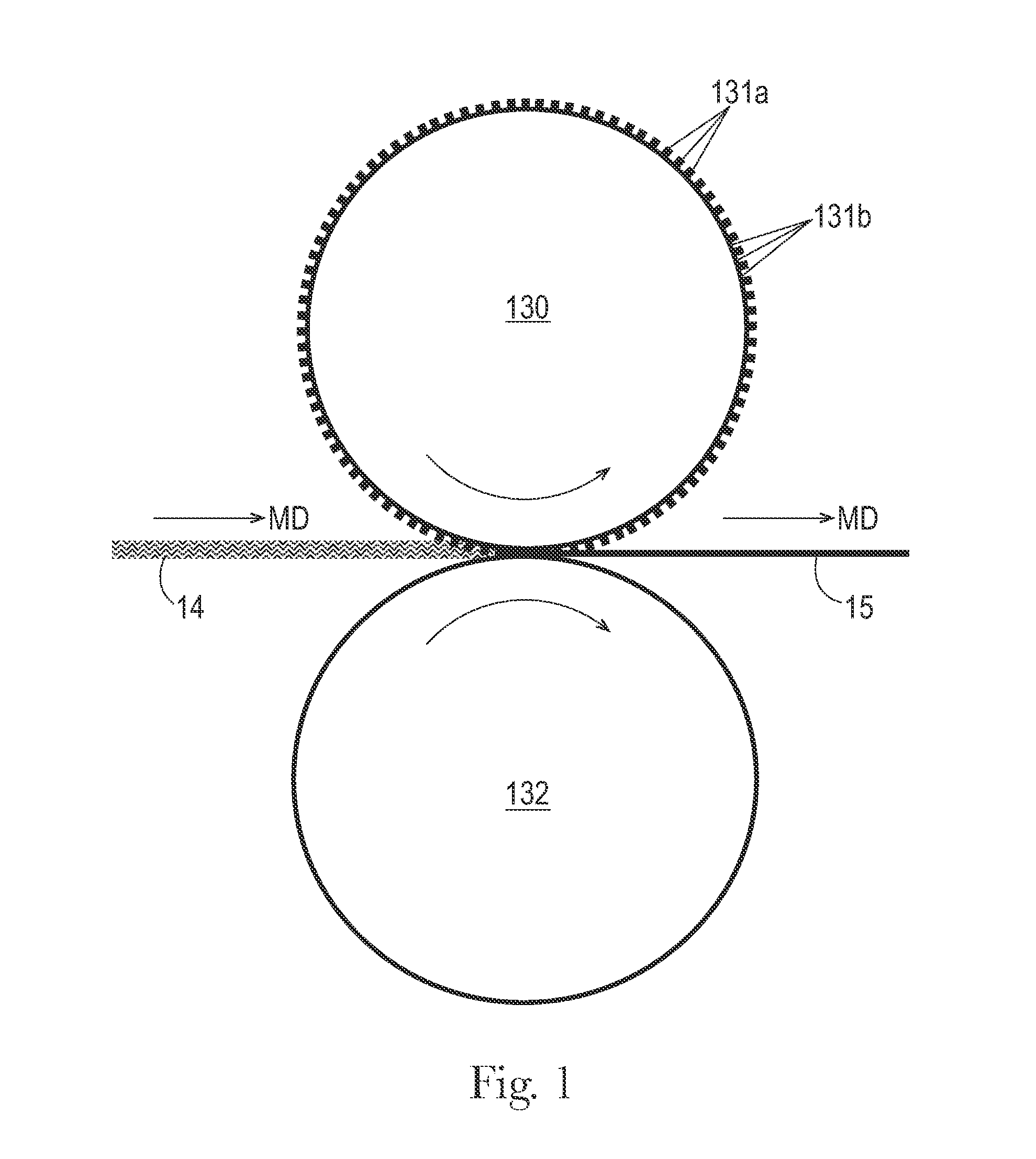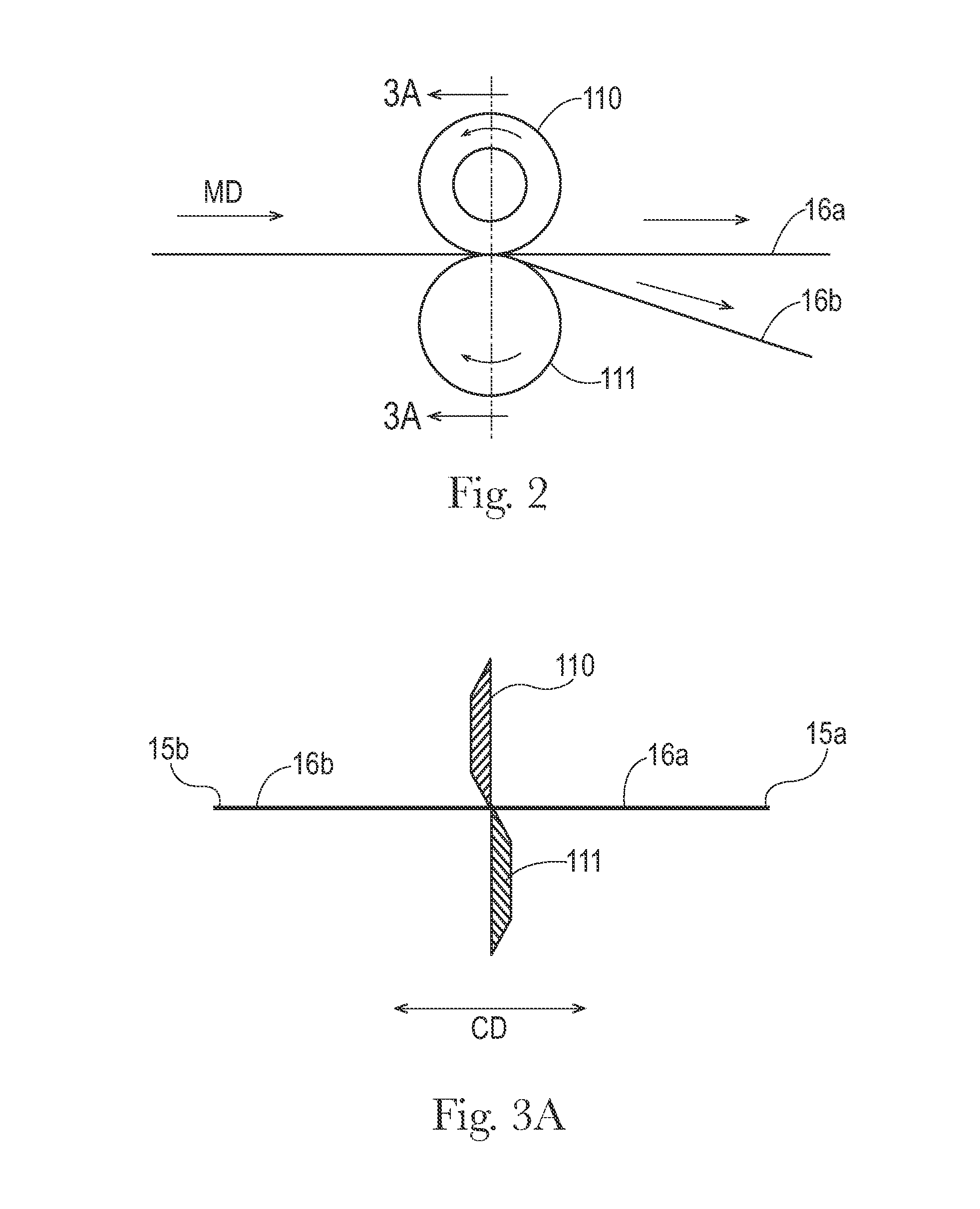Nonwoven web with improved cut edge quality, and process for imparting
a technology of nonwoven webs and cutting edges, applied in the field of nonwoven webs with improved cut edge quality and process for imparting, can solve the problems of significant industrial hygiene problems, unfavorable consumer perception of product quality, and undesirable frayed cut edges
- Summary
- Abstract
- Description
- Claims
- Application Information
AI Technical Summary
Benefits of technology
Problems solved by technology
Method used
Image
Examples
Embodiment Construction
OF EMBODIMENTS
Definitions
[0025]A “batt” is used herein to refer to an accumulation of fibers produced and laid down in a spinning process or other nonwoven web manufacturing process, prior to being consolidated in a calendering and bonding process as described herein. A “batt” comprises individual fibers, which are usually unbonded to each other, although a certain amount of pre-bonding between fibers may be performed and is also included in the meaning, such as may occur during or shortly after the lay-down of fibers in a spunlaying process, or as may be achieved by pre-calendering. This pre-bonding, however, still permits a substantial number of the fibers to be freely moveable such that they can be repositioned. A “batt” may comprise several strata, such as may result from depositing fibers from several beams or banks of spinnarets in a spunlaying process.
[0026]“Bicomponent” refers to fiber having a cross-section comprising two discrete polymer components, two discrete blends of ...
PUM
| Property | Measurement | Unit |
|---|---|---|
| angles | aaaaa | aaaaa |
| angles | aaaaa | aaaaa |
| diameters | aaaaa | aaaaa |
Abstract
Description
Claims
Application Information
 Login to View More
Login to View More - R&D
- Intellectual Property
- Life Sciences
- Materials
- Tech Scout
- Unparalleled Data Quality
- Higher Quality Content
- 60% Fewer Hallucinations
Browse by: Latest US Patents, China's latest patents, Technical Efficacy Thesaurus, Application Domain, Technology Topic, Popular Technical Reports.
© 2025 PatSnap. All rights reserved.Legal|Privacy policy|Modern Slavery Act Transparency Statement|Sitemap|About US| Contact US: help@patsnap.com



